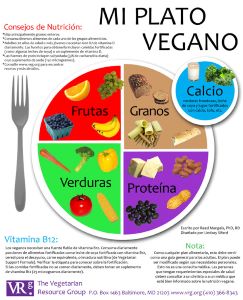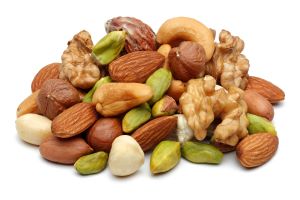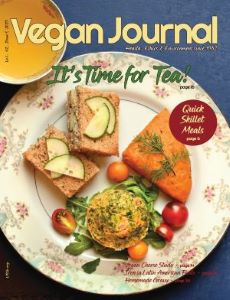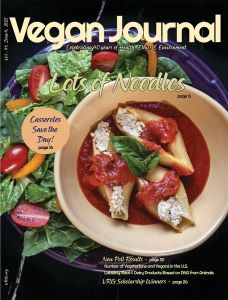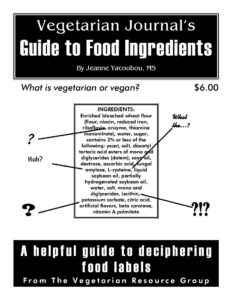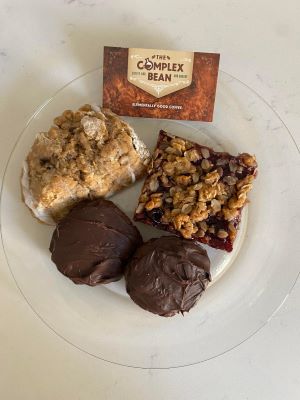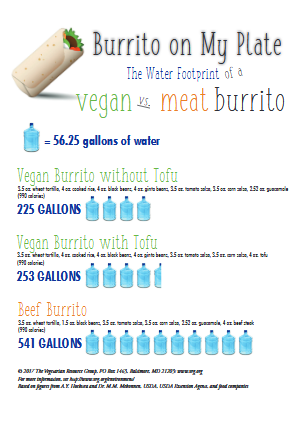Posted on
February 03, 2023 by
The VRG Blog Editor

Photo from Forever Pie
The Vegetarian Resource Group maintains an online Guide to Vegan/Vegetarian Restaurants in the USA and Canada. Here are some recent vegan restaurant additions. The entire guide can be found here: http://www.vrg.org/restaurant/index.php
To support the updating of this online restaurant guide, please donate at: www.vrg.org/donate
Here are some new additions to VRG’s guide:
Forever Pie, 8010 Melrose Ave., Los Angeles, CA 90046
In this Hip Hop atmosphere, Appetizers include Classics like Wingz, Garlic Knots, and Mozzarella Sticks. Pizzas: are built on a foundation of “home-made, hand-stretched dough.” Most include their house cheese. There’s an 18” Party Pie and a 14” Build your own option too. Choose vegan versions of old favorites, or spice things up with YANG! featuring Korean BBQ Bulgogi Sauce, Beyond Steak, Kimchee, spicy-sweet Gochujang, Mushrooms, Scallions, and their house cheese blend. Maybe try their twist on an Indian spice blend with Tikka Tikka—a Pizza with Masala seasoning blended in a tomato cream sauce served with vegan chick’n, cilantro, and other fixings, plus a myriad of additional topping options. Feeling saucy? Sides include: Buffalo Hot Sauce, Blue Cheese, Barbecue, Sweet & Spicy Calabrian Chili and many more. They offer Calzones with vegan cheese or Beyond Meat sausage, or meatballs. If it’s Pasta you’re after, it’s all about the Ziti which can be served with Butter, Bolognese or Vegan cheese sauce—both “home-made.” Salads: There are Caesar Salads with or without chicken and the Chopped Italian featuring greens, Cherry Tomatoes, Garbanzo Beans, Salami, and Pepperoncini topped with an Italian Vinaigrette. If you’re waffling over the dessert decision, you might try their Classic Drumstick–Vanilla Oatly Softserve in a chocolate-covered waffle cone, topped with chocolate.
Monster Vegan, 1229 Spruce St., Philadelphia, PA 19107
Monster Vegan offers a diverse menu of comfort food with a comical monster theme. The sandwich menu includes items such as the cheesesteak hoagie with Impossible beef and cheddar beer sauce and the Argento with fried chicken cutlets and house a la vodka sauce. Pasta dishes include clams and linguine with marinated oyster mushrooms and pesto penne with roasted butternut squash, kale, and whipped ricotta. Truffle parmesan fries, General Tso’s wings, and fried mac & cheese balls are available as small plates. A variety of cocktails, mocktails, beers, and wines are also offered.
Norah, 3801 SE Belmont St., Portland OR 97214
Although Thai in name, the cuisine here is truly Pan-Asian, with dishes ranging from samosas to tempura, and plenty of choices in between, including inventions like Drunken Linguine and favorites such as Pad Thai. A community hub as much as it is a restaurant, Norah is located just west of Cesar E Chavez Blvd, a few blocks south of Laurelhurst Park.
Pythagoras Conscious Food Philosophy, 14019 Parkway Blvd.., Ste. 101, Sugar Land, TX 77478
If you want eclectic, Pythagoras is the place to go. They offer it all: a business inspired by the importance of a collective consciousness; support of a local mini pig rescue and sanctuary; attention to detail when choosing ingredients (i.e., only using non-GMO flour); and an expansive menu with appetizers such as Space Swamp (aka Spinach Pie); a variety of gyros; 10” pizzas including the Greek Margarita (tomatoes, feta, and arugula) and the Pepperoni Buffalo (Buffalo garlic sauce, mozzarella, and pepperoni with the option of extra ranch); kabobs; and burgers—classic and falafel-based. And for those who cannot choose between pizza and a burger, there is the Pizza Burger, which has 2 5-inch mini pizzas as the buns. Keep reading the menu until the end, to make sure you order drinks—a craft cocktail if you’re in the mood—and dessert, because who will pass up a cheesecake baklava or a Mellow Martian (S’more Dessert Pizza)?
Soul Hi Vegan, Mellwood Art Center, 1860 Mellwood Ave., Studio 115, Louisville, KY 40206
Enjoy items like mac n’ vheez, greens, sweet-hot chik’n sandwich, burgers, “Steak” Tacos, and more.
The Groovy Floret, 8408 N. Lombard St., Portland, OR 97203
Enjoy tacos, salads, nachos, chips and salsa, breakfast hash, and sides for sharing.
Vine Vegan, 2080 Badlands Dr., Brandon, FL 33511
Vine Vegan offers a flavorful range of breakfast options, bowls, wraps, burgers, pastas, and comfort food in a fast casual environment. Fresh ingredients are combined with love and care, resulting in scrumptious dishes that reflect multicultural influences. A woman-owned, family-owned and -operated business, Vine Vegan partners with local businesses to source ingredients and products whenever possible. Try a breakfast burrito, American wrap, Cubano sandwich, or the Impossible Smash Patty Melt; the portions are generous. The smoothies and milkshakes are highly rated, too. All-day breakfast is available, as well as a kids’ menu. Located in the Brandon Crossroads shopping plaza, the restaurant is spacious and has many seating options. For takeout orders, earth-friendly options like compostable containers and plastic-free packaging are available.
